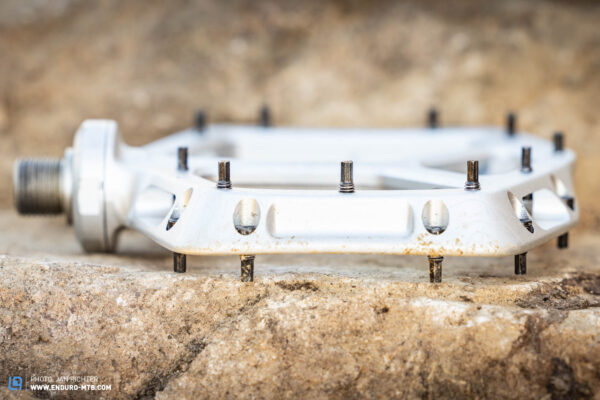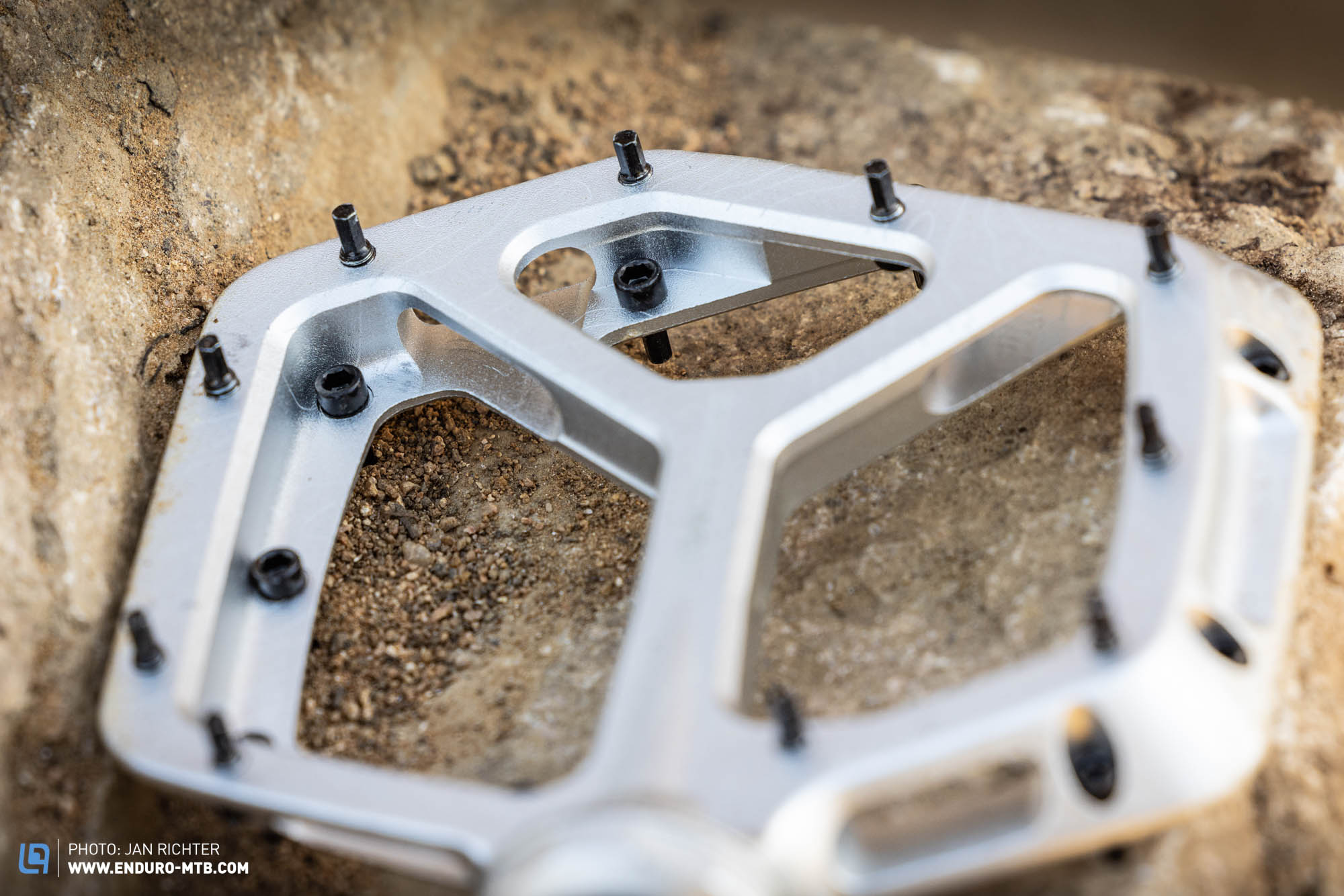Race Face are an iconic Canadian mountain bike brand that have been around since the dawn of the sport. These days, they have a huge portfolio that ranges from apparel to protectors and components. The Atlas pedals were relaunched last year, and we pitted them against 9 other flat pedals in this test.

Pin diameter 2.5 mm |Number of pins 10 | Pin insertion below |Manufacturer’s website
The Race Face Atlas pedals are the most expensive option in the test field with a price point of € 199.90, but the brand offer an impressive 10-year warranty, which also covers crashes. Weighing in at 376 g, they are among the lightest aluminium pedals on test, and they’re also the thinnest at just 12 mm tall. This is made possible by very short axles, which rotate on single bearings on the insides of the pedals. However, the downside of this is that the large bearings can grind on the cranks, depending on the crankset model. We had compatibility issues with cranks from E*thirteen and ROTOR, in particular. Plastic crank guards can also get in the way. In order to open the Atlas pedals, you need a 30 mm wrench, which isn’t part of a standard toolbox. This makes servicing them a bit of a hassle. The 10 pins on each side are super thin with a diameter of just 2.5 mm, and they’re hexagonal. Since they screw in from below, they’re easy to replace – even if they’re damaged.


The Race Face Atlas pedals on the trail
The platforms are slightly concave, making it easy to find the right position for your feet. However, the large inboard bearings can get in the way of your feet, effectively widening the stance width. This could get annoying for riders who have a rather narrow stance. With your feet placed on them correctly, the Atlas pedals offer a good amount of grip – you can feel how the thin pins drill into the soles of your shoes. Thus, your feet always stay where they belong, even in technically demanding or rough sections of trail. However, if you hit a rock or root with the Atlas pedals, the pins are prone to bending or even breaking off due to their small diameter.

The Race Face Atlas pedals look elegant with their slim profile and thin, aggressive pins. These provide a lot of grip, but they will easily bend or even break off. Fortunately, they’re easy to replace since they all screw in from below. And in the event of more severe damage, Race Face offer an impressive 10-year replacement warranty. However, the large bearings on the inside aren’t compatible with all cranks and they can get in the way of your feet.
Tops
- ultra-flat
- good grip
- long, comprehensive warranty
Flops
- opening the pedals requires a 30 mm wrench
- thin pins bend or break easily
You can find out more about at raceface.com
Click here for an overview: The best pedals for mountain bikers
all pedals in Review: Acros Clipless Pedal | Crankbrothers Mallet E LS | Hope Union | HT T2 | Shimano XT PD-M8120 | TIME SPECIALE 12 | Chromag Dagga | Crankbrothers Stamp 7 | Hope F22 | Look Trail Fusion | Nukeproof Horizon Pro Sam Hill | OneUp Composite Pedal | Race Face Atlas | Sixpack Kamikaze RA | SQ Lab 50X | Tatze Link Composite |
Did you enjoy this article? If so, we would be stoked if you decide to support us with a monthly contribution. By becoming a supporter of ENDURO, you will help secure a sustainable future for high-quality mountain bike journalism. Click here to learn more.
Words: Simon Kohler Photos: Jan RIchter









